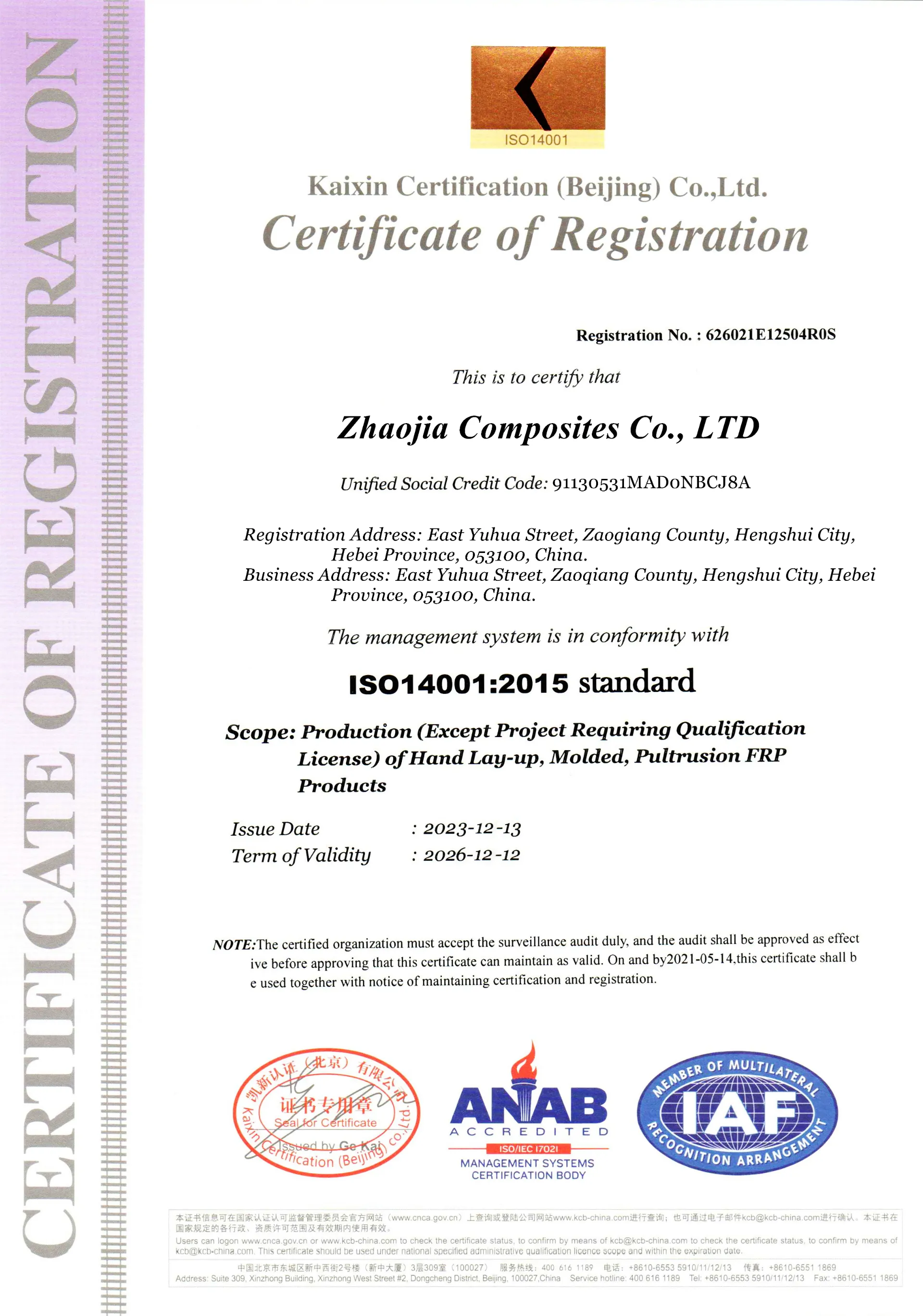loading...
- No. 9, Xingyuan South Street, Dongwaihuan Road, Zaoqiang County, Hengshui, Hebei, China
- admin@zjcomposites.com
- +86 15097380338
- Welcome to visit our website!
water treatment equipment
Understanding Water Treatment Equipment A Comprehensive Overview
Water is a precious resource that is essential for all forms of life. However, the water we rely on for drinking, cooking, and sanitation is not always safe or clean. Contamination from industrial pollutants, agricultural runoff, and inadequate waste management practices can render water unfit for use. This is where water treatment equipment comes into play, playing a vital role in ensuring water safety and quality.
What Is Water Treatment Equipment?
Water treatment equipment encompasses a range of technologies and systems designed to remove impurities and contaminants from water. These systems can be utilized for various applications, including residential, commercial, industrial, and municipal water treatment. The primary goal of this equipment is to produce clean, safe drinking water while managing wastewater effectively.
Types of Water Treatment Equipment
1. Filtration Systems Filtration is one of the most common methods of water treatment. Equipment such as sand filters, activated carbon filters, and membrane filters are used to remove suspended solids, chlorine, bacteria, and even some viruses from the water. Each type of filter has its mechanism of action and is chosen based on the specific contaminants present.
2. Chemical Treatment Chemical dosing systems are used to add substances to water that help neutralize harmful contaminants. For example, chlorine is commonly added to disinfect water and kill pathogens. Other chemicals, such as coagulants and flocculants, are employed to aggregate suspended particles, making it easier to remove them during the filtration process.
3. Reverse Osmosis (RO) Systems RO is a highly effective water purification technology that uses a semipermeable membrane to remove ions, molecules, and larger particles from water. It is particularly useful for desalination and removing dissolved salts and other contaminants, making it a popular choice for both residential and industrial applications.
4. Ultraviolet (UV) Disinfection UV disinfection systems use UV light to inactivate bacteria, viruses, and other pathogens in water. This method does not introduce any chemicals into the water, making it an environmentally friendly option. UV systems are often used as a final step in water treatment processes to ensure microbial safety.
water treatment equipment

5. Aeration Systems Aeration is a process used primarily for treating groundwater. It involves exposing water to air to remove volatile compounds and improve oxygen levels. This technique is particularly useful for removing hydrogen sulfide and other odor-causing compounds.
6. Wastewater Treatment Equipment Apart from treating potable water, equipment is also necessary for treating wastewater before it is released back into the environment. This includes primary, secondary, and tertiary treatment processes that remove solids, organic matter, nutrients (like nitrogen and phosphorus), and pathogens.
The Importance of Water Treatment Equipment
Water treatment equipment is vital not only for human health but also for the sustainability of environments. Untreated water can lead to the spread of diseases, negatively impact ecosystems, and degrade overall water quality. By investing in appropriate treatment technologies, communities can ensure access to clean water, safeguard public health, and protect local wildlife and ecosystems.
Innovations in Water Treatment Technology
The future of water treatment is promising, with ongoing research and innovations aimed at increasing efficiency and effectiveness. Technologies such as advanced filtration materials, smart water monitoring systems, and decentralized treatment solutions are being developed to address emerging contaminants and improve water quality sustainably.
Conclusion
As the world grapples with water scarcity and pollution challenges, the role of water treatment equipment becomes increasingly critical. By understanding the various types of equipment available and their applications, communities and industries can make informed decisions about how to protect this vital resource. Effective water treatment not only enhances the quality of water supply but also fosters environmental stewardship and public health, paving the way for a sustainable future.
-
The Rise of FRP Profiles: Strong, Lightweight, and Built to LastNewsJul.14,2025
-
SMC Panel Tanks: A Modern Water Storage Solution for All EnvironmentsNewsJul.14,2025
-
GRP Grating: A Modern Solution for Safe and Durable Access SystemsNewsJul.14,2025
-
Galvanized Steel Water Tanks: Durable, Reliable, and Ready for UseNewsJul.14,2025
-
FRP Mini Mesh Grating: The Safer, Smarter Flooring SolutionNewsJul.14,2025
-
Exploring FRP Vessels: Durable Solutions for Modern Fluid HandlingNewsJul.14,2025
-
GRP Structures: The Future of Lightweight, High-Performance EngineeringNewsJun.20,2025
